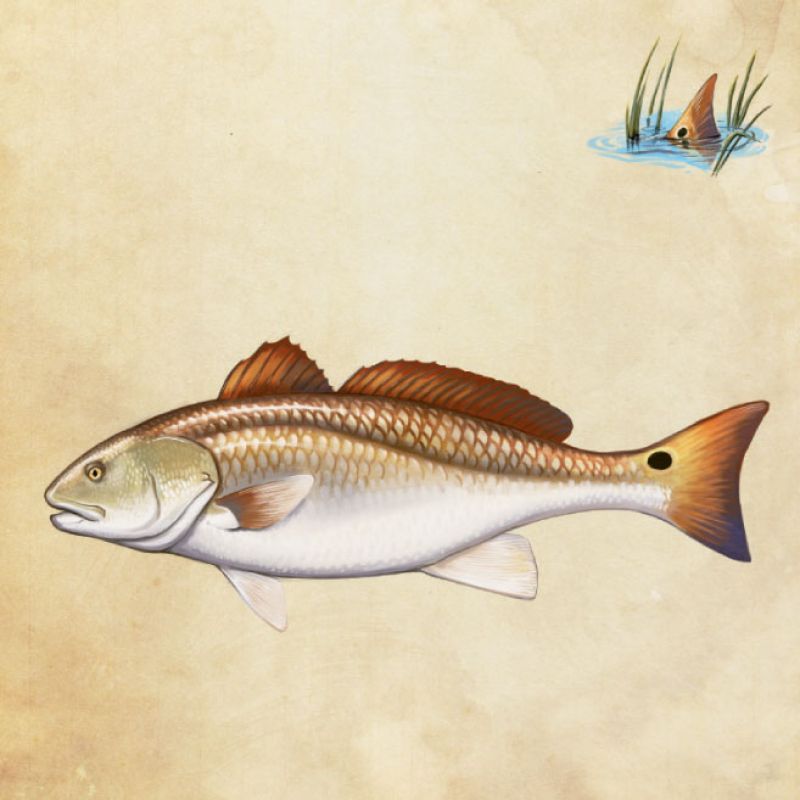
Seeing Spots
Scientists believe that the large spot at the base of the caudal (or tail) fin fools predators into attacking the tail rather than the head, giving the animal a better chance of survival. Occasionally, a fish has multiple spots, and in rare cases, none at all.
See Spot Grow
Mature spottail spawn in August and September, with the female laying some 1.5 million eggs at a time. Growing fast, a fish is 12 inches long by age one. By maturity (three or four years old), it’s often 27 to 36 inches, weighing six to eight pounds. The largest on record in South Carolina is a 75-pounder caught in 1965. The oldest on record? About 38, though sexagenerians have been reported in other states.
Hear Spot Drum
The nickname of “drum fish” comes from the low, croaking sound males use to attract females to spawning sites. They create the noise by contracting muscles attached to an internal organ called a “swim bladder” that aids in buoyancy. In the mid-1700s, Drum Island in Charleston Harbor was named for the large number of the fish in surrounding waters.
See Spot Run
While spottails don’t migrate, they do relocate to warmer waters when the weather cools. Juveniles leave marshes and shallow creeks for deeper inshore waters, and in late October and November, adults abandon inshore and nearshore habitats (tidal creeks, oyster reefs, and beaches) to go offshore, creating good surf fishing conditions.
See Spot Tail
These drum family members are known for “tailing.” Their tails stick out of the water as they feed along the bottoms of creeks, oyster reefs, beaches, and salt marshes. What are they so busily dining on? Adults eat menhaden, spot, anchovies, and blue and speckled crabs, while juveniles go for crustaceans, such as fiddler crabs, as well as smaller fish.
SPOT PROTECTION
To keep the species healthy, area fishermen are only allowed to take home three per day, and they must be between 15 and 23 inches long. And as a Designated State Gamefish, spottails caught in South Carolina waters may not be sold.